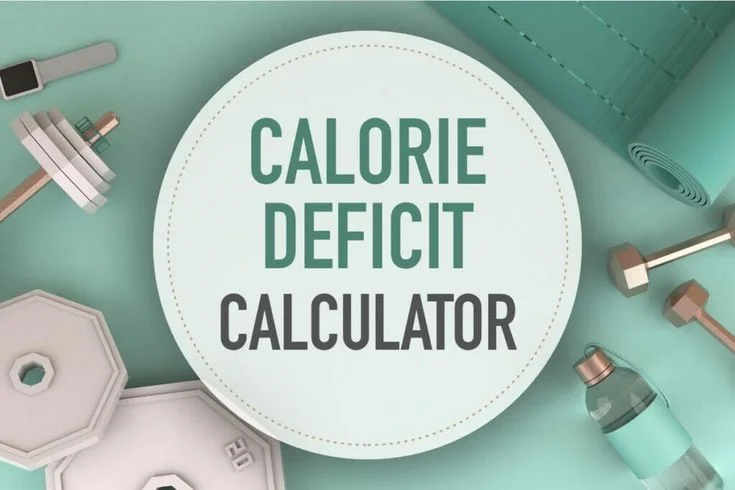When most people hear the word “calorie deficit for weight loss,” they think of starvation diets and The Biggest Loser contestants who suffer from extreme weight loss. While deficit-style weight loss can be an effective approach for some, it is not the only way to achieve long-term results. You can manage your calorie intake by eating more protein and fewer carbs for your body to burn fat rather than store it.
If you’re interested in learning how to lose weight with a calorie deficit but aren’t quite sure where to start, follow these eight easy steps. You won’t even realize how much weight you’ve lost in 8 weeks until you check the scale!
What is a calorie deficit for weight loss?
A few fundamentals: Energy is measured in terms of calories. Food provides your body with the calories it needs to survive. Your body breaks down food when you eat it to release energy that can be used immediately or stored for later, depending on what you need at the time.
Your body needs to take in a certain number of calories to maintain your weight, says Keri Gans, RD, the author of The Small Change Diet. And so, “a calorie deficit is when you consume fewer calories than your body requires to stay at its current weight,” she explains. If you take in fewer calories than your body needs, your body will turn to the calories you have stored up to burn for energy. As a result, you’ll lose weight.
A person’s daily calorie requirements vary depending on:
- sex
- age
- physical activity levels
- height
- weight
- body composition
These approximate calorie requirementsReliable Source for individuals over the age of 19:
Male:
| Age | Sedentary | Moderate | Active |
|---|---|---|---|
| 19–20 | 2,600 | 2,800 | 3,000 |
| 21–25 | 2,400 | 2,800 | 3,000 |
| 26–35 | 2,400 | 2,600 | 3,000 |
| 36–40 | 2,400 | 2,600 | 2,800 |
| 41–45 | 2,200 | 2,600 | 2,800 |
| 46–55 | 2,200 | 2,400 | 2,800 |
| 56–60 | 2,200 | 2,400 | 2,600 |
| 61–65 | 2,000 | 2,400 | 2,600 |
| 66–75 | 2,000 | 2,200 | 2,600 |
| 76+ | 2,000 | 2,200 | 2,400 |
Female:
| Age | Sedentary | Moderate | Active |
|---|---|---|---|
| 19–25 | 2,000 | 2,200 | 2,400 |
| 26–30 | 1,800 | 2,000 | 2,400 |
| 31–50 | 1,800 | 2,000 | 2,200 |
| 51–60 | 1,600 | 1,800 | 2,200 |
| 61+ | 1,600 | 1,800 | 2,000 |
A person can increase their activity level, cut back on their calorie intake, or do both to establish a calorie deficit.
Methods for computing caloric requirements

The number of calories an individual typically burns each day can be ascertained in several ways.
For instance, they can choose to use an online calculator or manually determine their daily caloric requirements.
Moderately active individuals can estimate how many calories they would need each day by manually multiplying their current body weight by 15. A deficit is anything lower than this.
Basal metabolic rate

A person’s current caloric needs can also be ascertained by looking at their activity levels and basal metabolic rate (BMR). Depending on their sex, they can use one of the following formulas to calculate their BMR:
- adult male: 66 + (6.3 x body weight in lb) + (12.9 x height in inches) – (6.8 x age in years) = BMR
- adult female: 655 + (4.3 x weight in lb) + (4.7 x height in inches) – (4.7 x age in years) = BMR
Once a person has their BMR, they can use one of the following formulas, based on their activity levels, to determine their caloric need:
- Sedentary: little or no exercise = BMR x 1.2
- Minimally active: 1–3 days per week of exercise or activity = BMR x 1.375
- Moderately active: 3–5 days per week of moderate activity or sports = BMR x 1.55
- Very active: 6–7 days per week of hard exercise = BMR x 1.725
- Extra active: athletes who train twice per day, for example = BMR x 1.9
To get the most accurate estimates of calorie intake, people can also consult a nutritionist or doctor. These experts can modify the estimate per the individual and their way of life.
How to establish a deficit in calories
An individual can begin to create a calorie deficit once they are aware of how many calories they require daily or weekly.
Diet

A person can achieve a calorie deficit by altering their daily food and beverage intake. One should prioritize eating foods that are low in calories but high in nutrients.
The Dietary Guidelines for Americans 2020–2025 state that according to a reliable source, a calorie-conscious, healthful diet should consist of:
- entire veggies
- entire grains
- entire fruits
- trim proteins
- dairy products with low or no fat, such as cheese, yogurt, milk, and fortified soy drinks
- “Healthy” oils like canola or olive
Additionally, one should abstain from trans fats and sugar-filled beverages.
Exercise
Exercise plays a big role in weight loss. If at all possible, an inactive person ought to try to up their daily activity level.
To maintain a moderate weight, the Centers for Disease Control and Prevention (CDC) advises 150 minutes of moderate activity and two sessions of strength training per week. A person will burn more calories the more physically active they are. As a result, they require more calories, which facilitates the creation of a deficit.
This can involve undertaking things like:
- walking
- taking the stairs instead of the elevator
- hiking
- playing sport
- biking
Is a calorie deficit sufficient for weight loss?
It’s simple to say that losing weight requires a calorie deficit. But this might not happen every time, and a lot of things can affect how much weight is lost.
People may remain the same weight when cutting calories due to hormonal changes, water retention, and changes in fat storage. This does not imply, however, that a person is not going through changes in their body composition.
Additional factors to think about
Cutting calories is an important part of weight loss, but it is not the only consideration to make.
- Calorie counting risks: Calorie counting is not always helpful in managing weight and can even be detrimental in certain situations.
- Activity benefits: Increasing one’s level of activity has several advantages.reliable source outside of weight control. Exercises that focus on strength and cardiology can enhance heart health, bone density, joint health, and mood.
- Dietary consideration: When cutting calories overall, one must still consume enough nutrients. If food intake is restricted improperly, it can result in dangerous nutritional deficits.
Dangers of consuming insufficient calories
Dieters should refrain from making drastic calorie cuts. Aiming to cut out roughly 500 each day is a good place to start. Moreover, weight loss of more than 2 pounds per week should be avoided.
A person may suffer from various health issues if they drastically reduce their caloric intake while deficient in essential nutrients.
A minimum amount of calories is required by the body to function properly. Cutting too many can raise your risk of developing certain illnesses, such as:
- inadequate nutrition, which can prevent bone mass from being gained or maintained
- denying the brain the energy it needs
- lowering the rate of metabolism
- raising the possibility of gallstone development
Symptoms of insufficient calorie intake can include:
- becoming ill a lot
- not being able to reduce weight
- observing unfavorable modifications in behavior or mood
- having trouble falling asleep
- feeling constipated
It is best to consult a physician or nutritionist before reducing one’s calorie intake. Individuals with particular medical conditions, like diabetes, might require particular diets to help control their condition.





